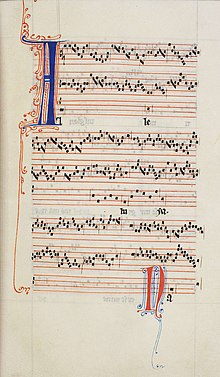 |
Artist's conception on what buttresses
would have looked like early on. |
On 15 April, 2019, a fire ravaged Notre Dame Cathedral in Paris. There was no question that re-building was necessary. The important question, however, was
how it should be re-built? Should they use recent 3D scans of the structure to restore it to the same look as just before the fire? Or should it be altered to reflect current culture? After all, all buildings are a reflection of their times. Even without the benefit of a class in architecture, we can tell if a building is "old" as in outdated or "old" as in historic or antique.
So how should Notre Dame be rebuilt? Re-designed for a new age? Or restored to an earlier version; if so, which version? Because it hasn't always looked the way it did on 14 April, 2019.
Before it was Notre Dame, the site (rather, right next to it) in the 7th century held an Early Christian basilica dedicated to St. Stephen. There is evidence that a church had existed there since the 4th century, but we are not certain if St. Stephen's was that church, or if it replaced the earlier building. It was 230 feet long—large for that time. This building was renovated in 857 and became a cathedral; that is, the residence of a bishop. After that, a Romanesque-style renovation and enlargement took place; even that was soon deemed too small, given the speed with which Paris was growing.
In 1160, therefore, Bishop Maurice de Sully decided to demolish the Romanesque structure, recycling the stone for his plan of a cathedral in the Gothic style. This new style had already been put into service in St.-Denis, and de Sully was keen on it. The cornerstone was laid 25 April, 1163, but the cathedral was not completed until many decades later, after several phases.
Even so, the new cathedral's transepts were already being remodeled in the mid-1200s, and separately in 1240 the north transept received a gabled portal with a rose window. The flying buttresses were not part of the original plan, being added in the 1200s. They were replaced with larger ones a hundred years later.
1699 saw the decision by King Louis XIV to make extensive modifications. The French Revolution claimed Notre Dame for the public, and removed much of its artwork. In 1801 Napoleon returned it to the Catholic Church, which then began restoration. By 1831, it was in such need of repair that Victor Hugo wrote a novel, now called
The Hunchback of Notre Dame, to raise interest and funds for the restoration.
The building has always been changing, and will again. What it looks like after the next round of restoration will be eagerly awaited (and no doubt criticized).
Even before the basilica to St. Stephen, however, there was a pagan temple on the site. There is no record of this; its existence has been extrapolated from a single sculptural find connected with Notre Dame. I'll tell you about it tomorrow.

































